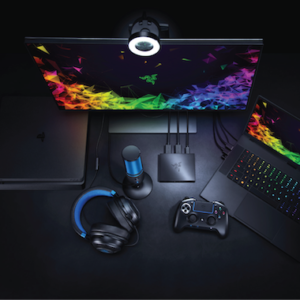
Hate leftovers? Even brands with the hottest products are bound to experience surplus inventory every once in a while.
Perhaps your forecasting is off or you ordered too much supply. Whether you have a solid inventory management strategy or not, there are plenty of profitable ways to recoup your investment.
8 Ways to Get Rid of Excess Inventory
At ChannelAdvisor, we’ve seen sellers come up with some remarkably inventive ways to squeeze as much value as possible out of each and every SKU — even when making way for new inventory. Need better ideas than the tried and true BOGO? Try these tips next time you’re looking to free up warehouse space:
-
Step Up Paid Search
Perhaps you already employed a basic advertising strategy to sell excess inventory. But with so many advanced advertising opportunities for reaching consumers on dominant channels like Google, Amazon and Facebook, digital marketing is still a strong option for locating new, purchase-ready consumers.
You may have to get a little aggressive with your paid search campaigns, particularly after peak seasons. The trick is finding the right keywords based on current trends and traffic. Think like a shopper by bidding on terms like “holiday clearance.” Or, select long-tail key phrases that correspond to your stock since they tend to cost less and convert more.
-
Expand Marketplace Reach
Are you sure you’re marketing in the right place? Different marketplaces meet different shopper needs. Consider all your buying personas and the corresponding niche marketplaces that could help you reach new audiences.
Case in point: eBay. This popular marketplace has changed a lot in recent years, and now offers tons of incentives through its Promotions Manager to help sellers advertise and liquidate goods. It’s also a great place to bundle offers that go well together, particularly in the wake of peak seasons when you may be looking for ways to make the most of holiday returns.
Pro tip: Don’t forget to sync your inventory across channels.
-
Focus on Fulfillment
Today, 42% of shoppers expect a two-day shipping option for every online purchase — not just those on Amazon. Could lengthy shipping times and high costs be to blame for poor sales volume?
Sometimes, it’s just how you position shipping that affects a buyer’s decision. Whether you lower your threshold for free deliveries or use data to guide your pricing strategies, shifting the focus to fulfillment may be all you need in some instances to start seeing a pickup in sales.
If that sounds too overwhelming, it may be time to consider third-party logistics. Working with a 3PL provider can put important details in the hands of experts who specialize in various aspects of order and inventory management.
-
Try Automated Repricing
You want to stay competitive with other sellers — but who has time to manually monitor price variations across hundreds of listings? Automated repricing tools automatically adjust your prices to remain competitive and align with your goals. Choose from:
- A marketplace repricer, which uses algorithmic* pricing technology to help you win the Buy Box or Best Offer position at the highest possible price
- A velocity repricer, where prices are adjusted automatically based on your goals — whether you want to extract more margin on fast-selling products or lower prices when sales are slow
*An algorithmic strategy focuses on winning the sale for your listings at the highest possible price, whereas a rule-based strategy sets a price relative to your competition.
-
Bundle Items
Sell complementary items as a bundle or try a kitting technique like “buy 1, get 1 free” to move more product and increase average order value. This not only helps you get rid of excess inventory, but provides a more convenient shopping experience for customers.
Product variations can also be part of bundled listings. Group individual products and keep your quantities in sync across bundles, individual SKUs and channels.
-
Get Social
Boost visibility by promoting deals and new bundles on all your social media channels, especially Instagram and TikTok. According to our 2022 Online Consumer Behavior survey, 55% of 18- to 25-year-old US shoppers have discovered products they’ve purchased on social media in the past 12 months.
Further, Shoppable Media makes your social media campaigns actionable when consumers are most engaged. Website and campaign widgets allow you to guide eager shoppers to where they can buy your products online or locally.
-
Promote Daily Deals
Bring added attention to products you have in excess with daily deals that showcase their features and/or offer a discount. Then, promote the deals across all your channels, from email to social to web. This not only boosts sales, but keeps audiences engaged in your daily content, building relationships for the long-term and future promotions.
-
Retarget Customers From Similar Products
Retargeting is especially important in the age of multiple devices. Appeal to audiences who purchase or shop for complementary products in one channel (e.g., mobile) with ads that showcase your excess inventory in others (e.g., Instagram). The more they see your ad across channels, the more they’ll be reminded to purchase. You can also target older customers who haven’t purchased in awhile as a way to reengage them today and for future promotions.
Effective Inventory Management is Possible
Inventory management is one of the most complex parts of e-commerce. That’s why we’ve carefully designed product data and inventory management tools to help you plan ahead, strategize and make the biggest return on your investments as possible. When you can visualize your inventory across all active channels, you can better prevent underselling (or overselling) scenarios.
Surplus inventory too overwhelming? Let our ChannelAdvisor Managed Services experts guide you toward equilibrium again. Contact us today to learn how we help brands and retailers automate inventory management and offload excess stock.





